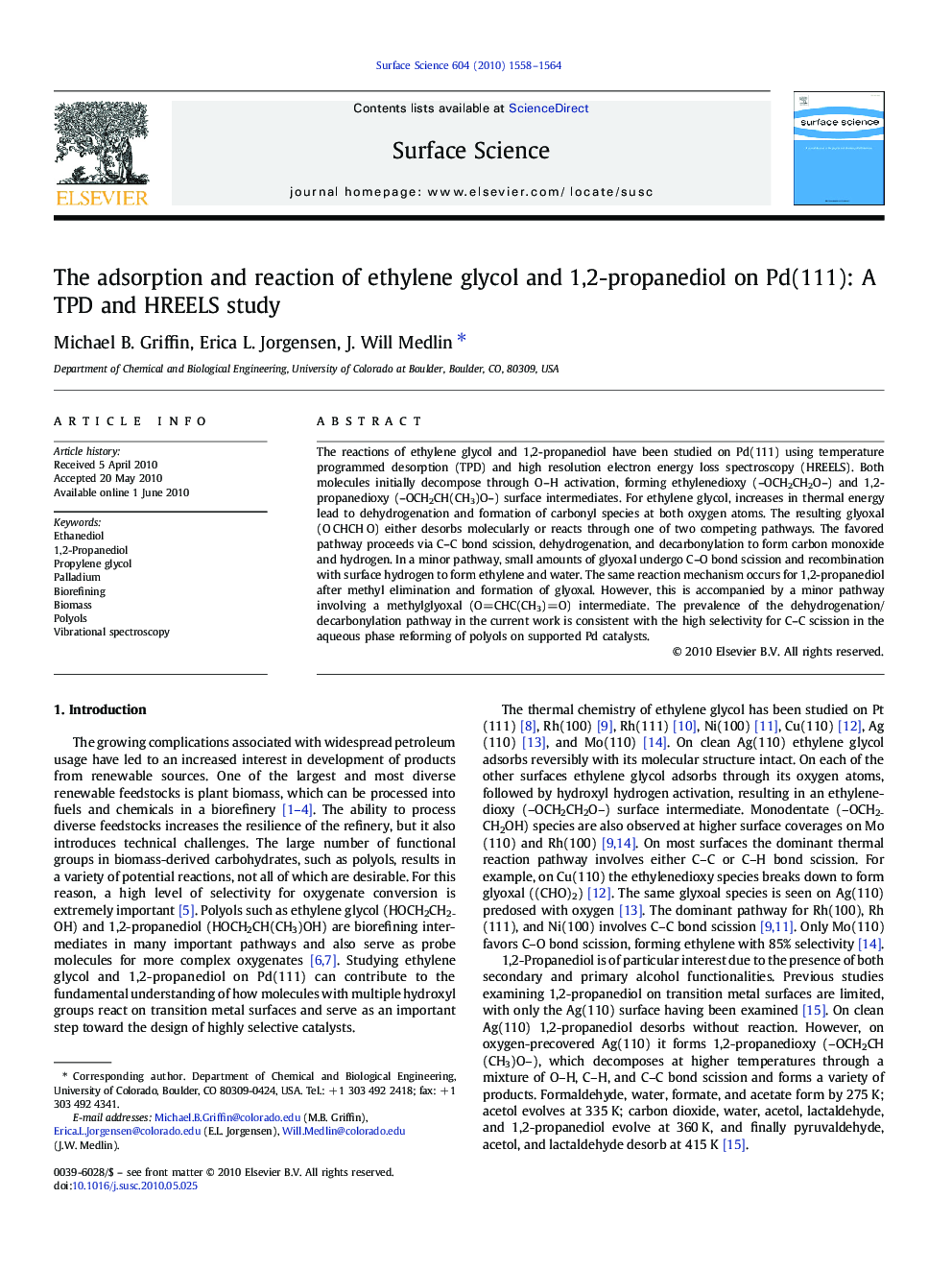| کد مقاله | کد نشریه | سال انتشار | مقاله انگلیسی | نسخه تمام متن |
|---|---|---|---|---|
| 5423690 | 1507949 | 2010 | 7 صفحه PDF | دانلود رایگان |
عنوان انگلیسی مقاله ISI
The adsorption and reaction of ethylene glycol and 1,2-propanediol on Pd(111): A TPD and HREELS study
دانلود مقاله + سفارش ترجمه
دانلود مقاله ISI انگلیسی
رایگان برای ایرانیان
کلمات کلیدی
موضوعات مرتبط
مهندسی و علوم پایه
شیمی
شیمی تئوریک و عملی
پیش نمایش صفحه اول مقاله

چکیده انگلیسی
The reactions of ethylene glycol and 1,2-propanediol have been studied on Pd(111) using temperature programmed desorption (TPD) and high resolution electron energy loss spectroscopy (HREELS). Both molecules initially decompose through O-H activation, forming ethylenedioxy (-OCH2CH2O-) and 1,2-propanedioxy (-OCH2CH(CH3)O-) surface intermediates. For ethylene glycol, increases in thermal energy lead to dehydrogenation and formation of carbonyl species at both oxygen atoms. The resulting glyoxal (OâCHCHâO) either desorbs molecularly or reacts through one of two competing pathways. The favored pathway proceeds via C-C bond scission, dehydrogenation, and decarbonylation to form carbon monoxide and hydrogen. In a minor pathway, small amounts of glyoxal undergo C-O bond scission and recombination with surface hydrogen to form ethylene and water. The same reaction mechanism occurs for 1,2-propanediol after methyl elimination and formation of glyoxal. However, this is accompanied by a minor pathway involving a methylglyoxal (O=CHC(CH3)=O) intermediate. The prevalence of the dehydrogenation/decarbonylation pathway in the current work is consistent with the high selectivity for C-C scission in the aqueous phase reforming of polyols on supported Pd catalysts.
ناشر
Database: Elsevier - ScienceDirect (ساینس دایرکت)
Journal: Surface Science - Volume 604, Issues 19â20, September 2010, Pages 1558-1564
Journal: Surface Science - Volume 604, Issues 19â20, September 2010, Pages 1558-1564
نویسندگان
Michael B. Griffin, Erica L. Jorgensen, J. Will Medlin,